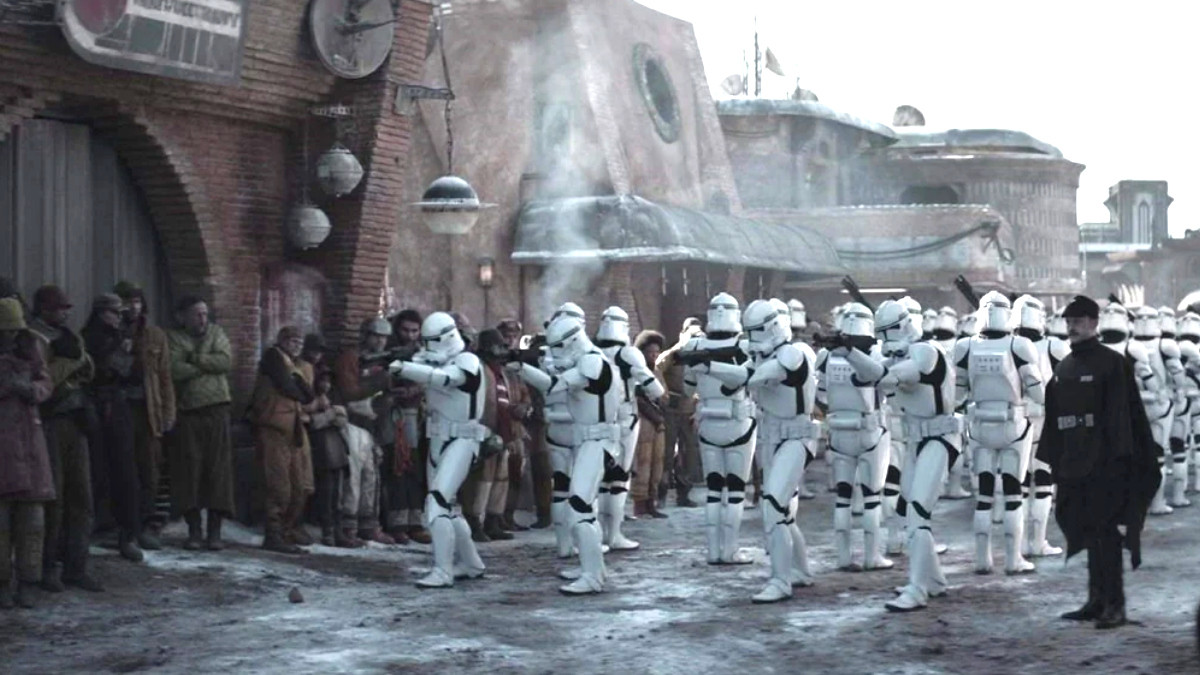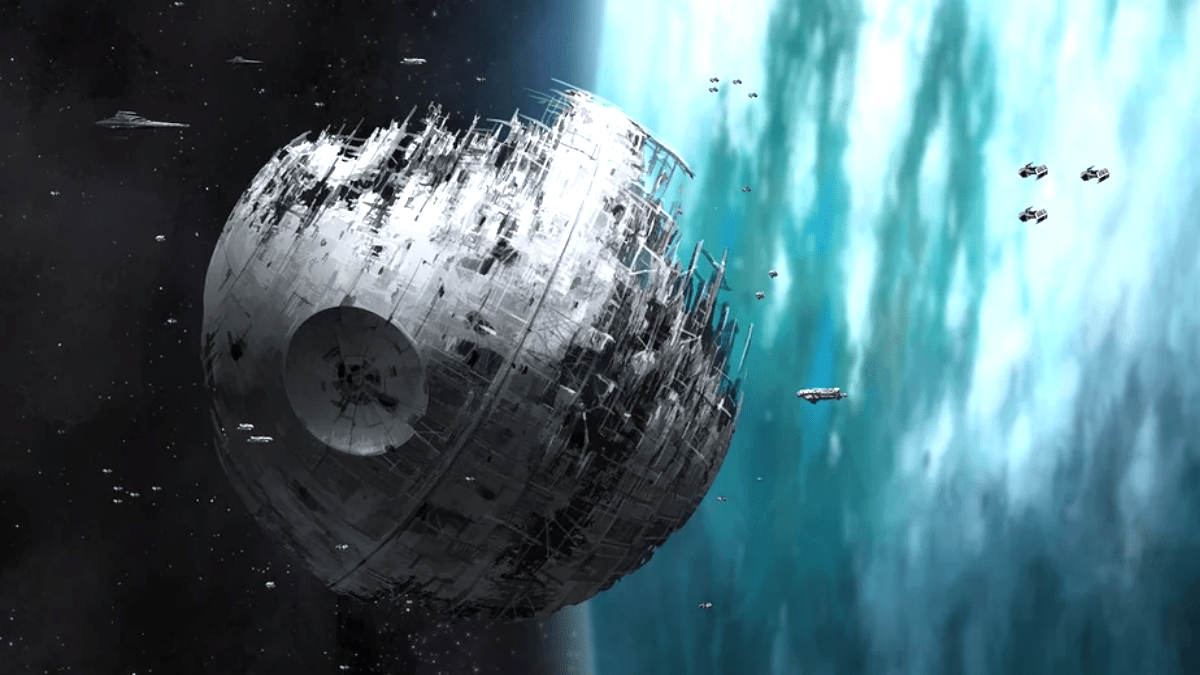The Star Wars universe spans many thousands of years of galactic history but can be split into three distinct time periods. Each one has its set of canon (and non-canon) heroes and villains, and each one contains buckets of lore.
Below is a brief rundown of what the first 25,000 years of Star Wars history looks like. And its not all about the Death Stars.
The Old Republic

Seen as a golden age by many later generations, the Old Republic existed thousands of years before most Star Wars canon is set. While records of so long ago are sketchy, it was formed from about 25,000 years BBY (Before the Battle of Yavin). Star Wars fans use the famous battle at the end of the original Star Wars film as a useful point to date the universe. Yavin was the fight where Luke Skywalker used the Force to destroy the first Death Star by shooting a proton torpedo down the exhaust port.
The Old Republic was dominated by the Jedi Knights – a powerful military and spiritual order that ensured peace was kept within the Republic’s borders and that any outside enemies were kept at bay. The Old Republic was democratic in nature, electing thousands of Senators from its countless member worlds. A series of wars with the Sith – rogue Jedi who embraced the Dark Side of the Force – caused innumerable deaths and even saw Coruscant, the capital of the Republic, occupied for a time.
The year 1032 BBY was momentous in that it saw the end of the Sith Wars. Infighting within the Sith caused weakness which the Jedi were able to exploit, culminating in the titanic Battle of Coruscant and the final destruction of the Sith Order.
So began a period known as the Thousand Year Peace, where the Republic expanded its borders and reached new heights of power and influence. But no peace lasts forever, and the ever-present Dark Side of the Force proved too great a temptation for some.
The Galactic Empire

“Imperius Unitada ober Totallex” (Empire united over all) is the propaganda slogan that perfectly sums up the fascist seediness of the darkest days in Star Wars history. Far from being eliminated at the Battle of Coruscant, the Sith were simply biding their time until the moment was ripe.
The thousand year peace had seen unbridled expansion but also unrestricted corruption among the ruling elite of the Republic. Much like the Roman Empire on Earth, by the year 32 BBY many were seeing the Republic not as a force for good, but instead as an unworkable society. The leaders of the powerful Trade Federation were infiltrated by the Sith, and this culminated in the eventual seizure of power by the Sith lord Darth Sidious. His message was simple: “There is only one plan – one great design which shall govern the universe – mine.“
Sidious quickly set about constructing the most terrifying military force ever seen in Star Wars – the Imperial Fleet. With their menacing uniforms, coolly unfeeling British accents, and penchant for conquering everything and everyone that doesn’t agree with them, the soldiers and sailors of the Galactic Empire are the ultimate bad guys in the franchise.
The Empire was officially formed in 19 BBY and finally fragmented under the weight of rebellion in 4 ABY (After the Battle of Yavin). The Rebel Alliance was the key factor in the destruction of the short-lived Empire. This alliance included many famous characters in the franchise – such as Jedi Knight Luke Skywalker and his flawed but ultimately heroic mercenary pal Han Solo.
Economist and Star Wars fan Zachary Feinstein calculated that the annual GDP of the Empire at its height would be a staggering 4.6 sextillion U.S. dollars. This colossal military budget allowed for the construction of not one, but two Death Stars – the ultimate weapon of mass destruction.
Darth Vader, a former Jedi turned Sith, orchestrated the construction of these two planet-killers. The first Death Star was destroyed by Luke in the Battle of Yavin. The second larger Death Star suffered the same fate four years later in the equally important Battle of Endor. Darth Vader and Darth Sidious were also killed during this epic confrontation.
The New Republic

The New Republic was officially founded one year after the Battle of Endor in 5 ABY. The hope was that it would recreate the golden days of the thousand year peace and ensure prosperity for all citizens. Sadly, this was not to be the case.
The capital shifted from one member world to another on rotation, meaning there could never be the same central control seen in the Old Republic. The New Republic Self Defense Force suffered massive budget cuts in the wake of the collapse of the Empire. This allowed for the rise of Sith splinter groups. Outer Rim territories, always difficult to control for the Old Republic, proved impossible to manage for the New. Many old Imperial Navy generals set themselves up as warlords on these planets, causing no end of grief for the still-young New Republic.
And of course the allure of the Dark Side never goes away. Die-hard supporters of the Empire eventually used the Republic’s weakness as an excuse to collect together in the First Order, which sought to establish Imperial control of the galaxy.
Rather than mobilizing quickly to meet this new threat, the war-weary Senate dithered. As the power of the First Order grew, the influence of the Republic waned, and many citizens grew dissatisfied. The First Order retained the Empire’s love for criminally destructive superweapons, building the fearsome Starkiller Base. In 34 ABY, First Order commanders used the Base to destroy Hosian Prime (the then-capital of the New Republic). Most of the Senate was incinerated, along with many key Republic military commanders. The New Republic Defense Force was decimated in the attack, which turned Hosian Prime into a burning hell.
Resistance groups sprang up throughout the galaxy, determined to oppose the rising power of the First Order. In 35 ABY, the decisive Battle of Exegol was fought by a coalition of resistance fighters and citizen fleets, leading to the defeat of the First Order. Though still powerful, the Order remains a broken force in the galaxy. Hope exists that another more successful Republic can be formed and the galaxy can enjoy another thousand year peace.
But the Dark Side itself can never be defeated as long as there are those who lust for power and control over others.

